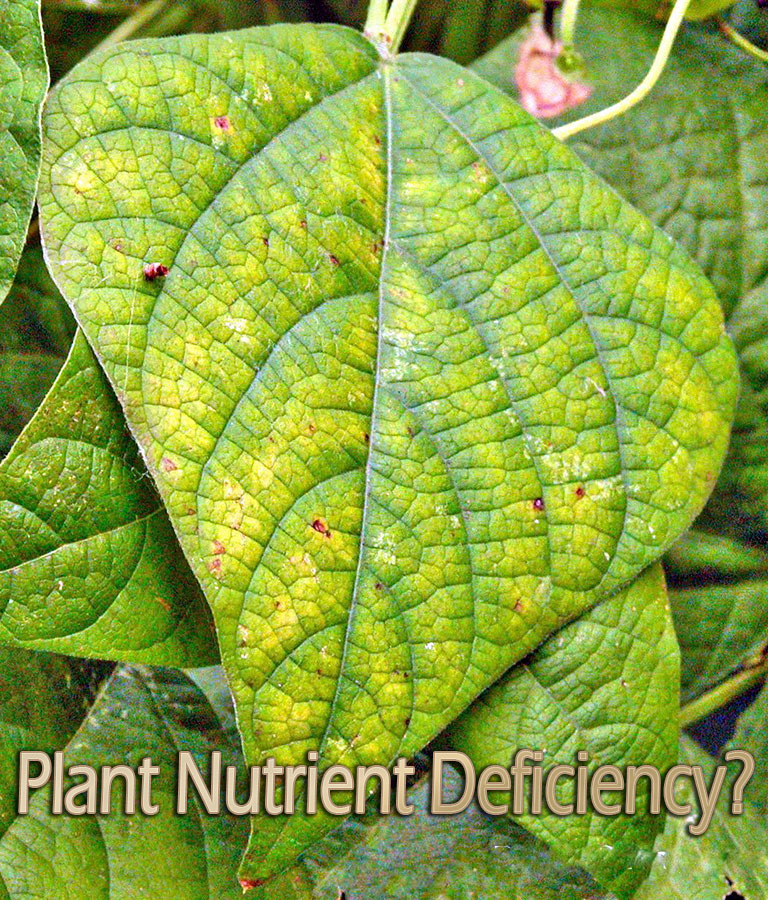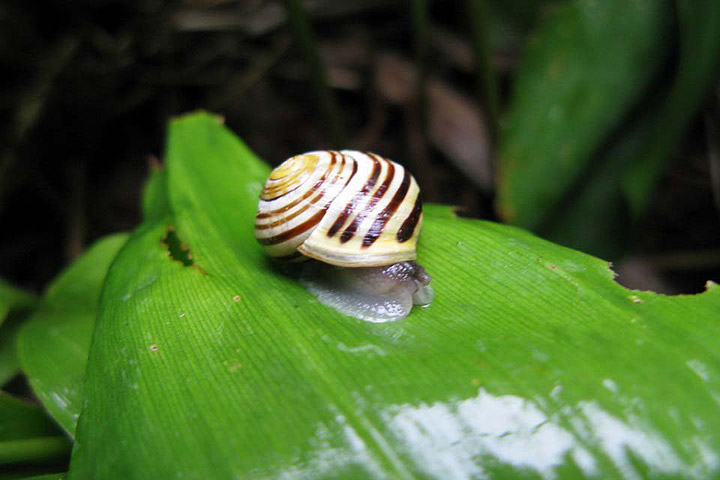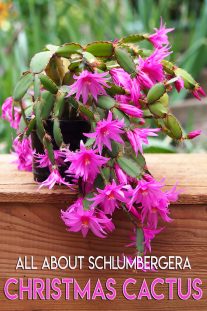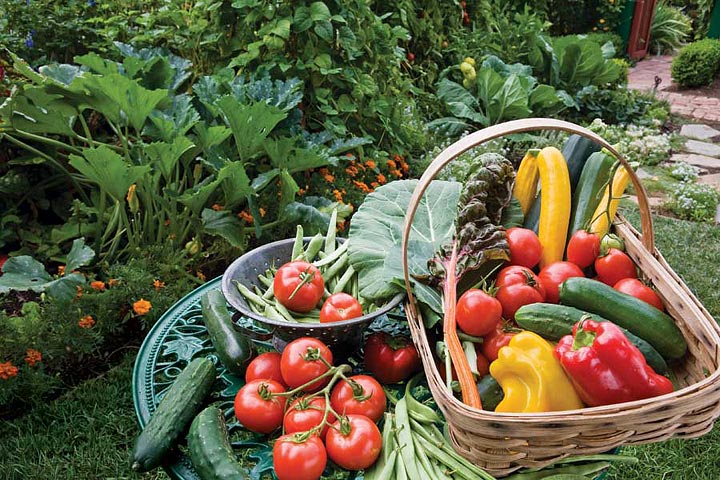
Not all plant problems are caused by insects or diseases. Sometimes an unhealthy plant is suffering from a nutrient deficiency or even too much of any one nutrient. Plant nutrient deficiencies often manifest as discoloration or distortion of the leaves and stems. The following chart outlines some possible problems. Unfortunately many problems have similar symptoms and sometimes it is a combination of problems, so managing the problem can be a bit of trial and error.
Before you try to fix your plant with too many supplement and kill it with kindness, be sure you eliminate other obvious causes for sickly plants:
- Check first for signs of insects or disease.
- Foliage discoloration and stunted plants can easily be caused by soil that is too wet and drains poorly or soil that is too compacted for good root growth.
- Extreme cold or heat will slow plant growth and effect flowering and fruit set.
- Too much fertilizer can result in salt injury. Your plants may look scorched or they may wilt, even when the soil is wet.
If you can’t seem to remedy the situation, bring a sample of the ailing plant in to your local cooperative extension service, for a definitive diagnosis.
What Nutrients do Plants Need?
Plants require a mix of nutrients to remain healthy. Nutrients that are needed in relatively large amounts are called the macronutrients. Plant macronutrients include: nitrogen, potassium, phosphorus, calcium, sulfur and magnesium.
There are a handful of additional nutrients that are required for plant growth, but in much smaller quantities. These micronutrients include: boron, copper, iron, manganese, molybdenum and zinc.
How Do Plants Receive Nutrients?
All of these nutrients are taken in through the roots. Water transfers the nutrients from the soil to the plant roots.
So one requirement of sufficient plant nutrition is water.
A second requirement is the appropriate soil pH for the plant being grown. Each plant prefers a specific pH range to be able to access the nutrients in the soil. Some plants are fussier than others, but if the soil pH is too acidic or alkaline, the plant will not be able to take in nutrients no matter how rich your soil may be.
Plant Nutrient Deficiency Symptoms
Macronutrients
Calcium (Ca)
- Symptoms: New leaves are distorted or hook shaped. The growing tip may die. Contributes to blossom end rot in tomatoes, tip burn of cabbage and brown/black heart of escarole & celery.
- Sources: Any compound containing the word ‘calcium’. Also gypsum.
- Notes: Not often a deficiency problem and too much will inhibit other nutrients.
Nitrogen (N)
- Symptoms: Older leaves, generally at the bottom of the plant, will yellow. Remaining foliage is often light green. Stems may also yellow and may become spindly. Growth slows.
- Sources: Any compound containing the words: ‘nitrate’, ‘ammonium’ or ‘urea’. Also manure.
- Notes: Many forms of nitrogen are water soluble and wash away.
Magnesium (Mg)
- Symptoms: Slow growth and leaves turn pale yellow, sometimes just on the outer edges. New growth may be yellow with dark spots.
- Sources: Compounds containing the word ‘magnesium’, such as Epson Salts.
Phosphorus (P)
- Symptoms: Small leaves that may take on a reddish-purple tint. Leaf tips can look burnt and older leaves become almost black. Reduced fruit or seed production.
- Sources: Compounds containing the words ‘phosphate’ or ‘bone’. Also greensand.
- Notes: Very dependent on soil pH range.
Potassium (K)
- Symptoms: Older leaves may look scorched around the edges and/or wilted. Interveinal chlorosis (yellowing between the leaf veins) develops.
- Sources: Compounds containing the words ‘potassium’ or ‘potash’.
Sulfur (S)
- Symptoms: New growth turns pale yellow, older growth stays green. Stunts growth.
- Sources: Compounds containing the word ‘sulfate’.
- Notes: More prevalent in dry weather.
Micronutrients
Boron (B)
- Symptoms: Poor stem and root growth. Terminal (end) buds may die. Witches brooms sometimes form.
- Sources: Compounds containing the words ‘borax’ or ‘borate’.
Copper (Cu)
- Symptoms: Stunted growth. Leaves can become limp, curl, or drop. Seed stalks also become limp and bend over.
- Sources: Compounds containing the words ‘copper’, ‘cupric’ or ‘cuprous’.
Manganese (Mn)
- Symptoms: Growth slows. Younger leaves turn pale yellow, often starting between veins. May develop dark or dead spots. Leaves, shoots and fruit diminished in size. Failure to bloom.
- Sources: Compounds containing the words ‘manganese’ or ‘manganous’
Molybdenum (Mo)
- Symptoms: Older leaves yellow, remaining foliage turns light green. Leaves can become narrow and distorted.
- Sources: Compounds containing the words ‘molybdate’ or ‘molybdic’.
- Notes: Sometimes confused with nitrogen deficiency.
Zinc (Zn)
- Symptoms: Yellowing between veins of new growth. Terminal (end) leaves may form a rosette.
- Sources: Compounds containing the word ‘zinc’.
- Notes: Can become limited in higher soil pH.
Once you get your plants back to health, keep them growing that way by amending your soil every year with fresh organic matter and have your soil tested periodically, to correct imbalances before they become extreme.





Leave a Reply